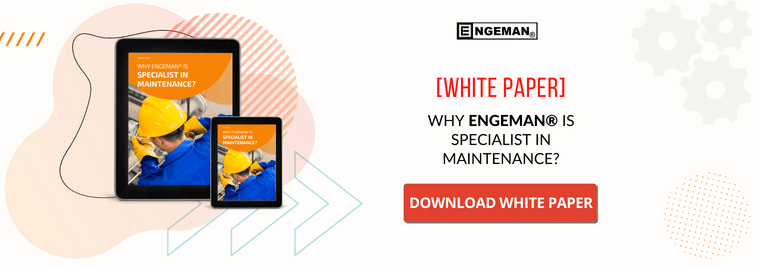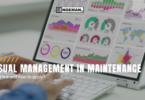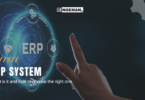A good maintenance manager is one who can have a strategic eye so that they can find the operational bottlenecks that are being responsible for delays at some point in production. And for that, it is necessary to have good planning, don’t you agree?
Planning is a key factor for smooth company running, and without it, it is practically impossible for organizations that aspire to be more competitive on the market to achieve a level of prominence. Having well-defined strategies, decisions are more assertive.
In this sense of management, TPM pillars (Total Productive Maintenance) bring actions that enhance results and increase equipment useful life. Thus, investments will be well applied and the products with a distinguished quality.
In this series article, we will talk about the fifth pillar of TPM, which is Early Management. This pillar is strongly attached to action planning and the company’s future results. Do you want to know how Early Management can help in your business reliability and in the enhancement of your results? So, follow up!
What is Early Management TPM?
As we have been seeing in the articles of the TPM Pillar Series, which stage is performed to achieve the Total Productive Maintenance goals. Total Productive Maintenance goes beyond a maintenance method, it allows the deployment of a management culture in companies, always with the help of employees in all its pillars.
The fifth pillar of TPM, Early Management, also known as initial control, project improvements or early improvements, if characterized by improvement activities that are performed in the initial project phase of the project, that is, in the design, construction and equipment planning. Based on knowledge learned and all practices performed in previous pillars, it is possible to apply the early management and ensure a more efficient system. Through this pillar, the company can deploy the processes that will facilitate equipment operation and, consequently, the production process will be more simplified.
Knowing all equipment maintenance, its operation, knowing in detail when failures occurred and why they occurred, it is possible to construct a project that aims to increase their efficiency, which will reflect in reduction of costs and increased productivity.
Objectives of Early Management
The correct Early Management application allows the adoption of prevention actions and a more structured planning in all company departments through the practice of recording improvements and all histories results. In this way, this information can be increased in new projects, thus ensuring quality production.
Through Early Management adoption, the company ensures that all projects that are executed will always be in accordance with TPM methodology, always aiming to optimize the equipment performance and prevent unexpected downtimes. Past experience is used to ensure that new equipment reaches its peak performance in the shortest possible time.
Through other pillars’ histories, it is possible to produce equipment that is easier to operate and that facilitates Autonomous Maintenance deployment in company. Another objective of Early Management is to achieve the maximum performance of the machines while minimizing Life-Cycle Cost (LCC).
What is the meaning of Life-Cycle Cost (LCC)?
Life-Cycle Cost (LCC) of an asset includes the sum of all expenses that are performed with a certain equipment throughout its useful life. These expenses are considered from the design, installation, operation, maintenance to its disposal.
LCC calculation is done through the formula LCC = IC + RC in which the IC is characterized by initial cost (acquisition, installation, and operation) and the RC is residual cost (maintenance, energy bills, labor, environmental impacts and other expenses).
This calculation is very important for the company because with it, it is possible to have a more precise basis for its investments. In this way, it is possible to apply smarter strategies to acquire new equipment or improve your projects so that you can achieve more precision and success to face the current challenges of the market.
What is the relationship between LCC – Life-Cycle Cost and Early Management?
New projects can be introduced in the company without the same losses when we make a comparison with other equipment that is already installed and in use in the company. Therefore, it is possible to ensure a higher initial performance in equipment, reducing any early failure and reducing maintenance on equipment.
With the experiences with the other TPM pillars, in the design phase it is possible to map all operation and maintenance costs that a certain equipment had and thus achieve an improvement in the efficiency of the next equipment and projects. If this operation and maintenance costs are high, equipment life-cycle costs will also be high. In this way, Early Management will outline strategies through the project so that there is an optimization of all company’s future costs, directly impacting in equipment Life-Cycle Cost.
Early Management Pillar importance
As it happens in all departments of a company, in maintenance, planning is also a key part of increasing the process reliability. After all, having a downtime in the middle of production is a problem that will bring financial risks to the company.
With proper planning, the company will be able to achieve an increase in quality, reduced costs, increased productivity, among many other benefits. In Early Management, projects are developed that cover problems that have already been experienced at another time within the company. This pillar design can also bring improvements that are necessary to resolve everyday problems and thus minimize losses or waste as much as possible.
With the project finished, it’s time to develop new products or processes, focusing on easy-to-operate equipment. Important items such as equipment reliability index and systems, expecting first failures, maintainability conditions or waste that will be generated by equipment, accident risk reduction, all of this can come in the project and will promote important impacts on company’s processes, generating more competitiveness and profitability.
All the actions proposed by this pillar seek to anticipate possible problems already in the project, thus preparing the maintenance department to monitor the machinery throughout its useful life.
So, did you like this TPM Pillar? Share it with your team and apply it to your company, have more profitability and reliability for your brand. Do not miss the next pillar: Training and Education! Always be well informed and learn all about Total Productive Maintenance and its pillars on our blog and on our social media.








